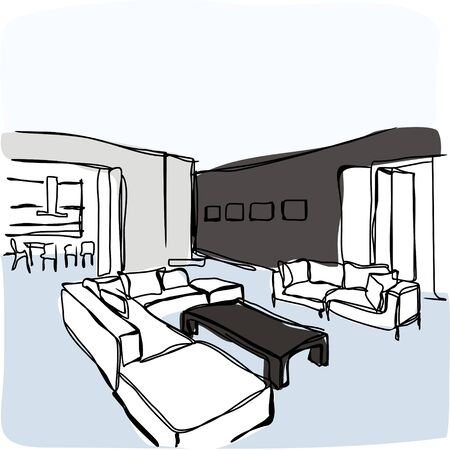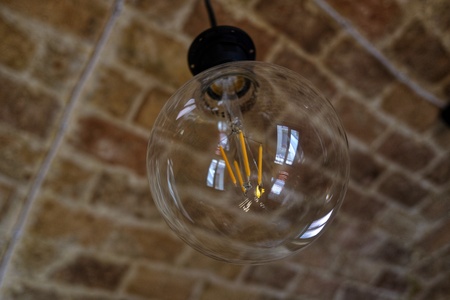Introduction to British Period Home Lighting
When one imagines the evocative interiors of a classic British period home, pendant lights and chandeliers are often at the heart of its visual story. These lighting elements do more than simply illuminate; they are woven into the very fabric of British domestic design, shaping atmosphere and social rituals from grand Georgian manors to cosy Victorian terraces. Over centuries, their forms and functions have evolved in tandem with advancements in technology and shifts in taste, but their role as a centrepiece—both practically and aesthetically—remains undiminished. The soft glow of a chandelier or the focused brilliance of a pendant light creates not just light, but mood, accentuating architectural details and enriching the overall character of a room. In Britain’s period homes, these luminaires are key to understanding how light has always been used not only for necessity but as an essential element of interior beauty and cultural expression.
2. Early Candlelight and Gaslit Origins
The story of pendant lights and chandeliers in British period homes is rooted in the artful interplay between form, function, and evolving technology. In the grand halls of Georgian manors and the intricate parlours of Victorian townhouses, lighting was not merely a necessity but a statement of status and sophistication.
Before the widespread adoption of electricity, illumination relied on candlelight. Chandeliers—often crafted from wood, iron, or brass—graced the ceilings of affluent residences. These early fixtures featured multiple arms to hold candles, casting a warm, flickering glow that danced across ornate plasterwork and gilded cornices. The placement of these chandeliers was both practical and symbolic: positioned in entrance halls and dining rooms to impress guests while providing much-needed light for evening gatherings.
The Advent of Gas Lighting
The 19th century ushered in a new era with the introduction of gas lamps. This innovation transformed domestic interiors across Britain, particularly during the late Georgian and Victorian periods. Pendant lights began to emerge as functional alternatives to traditional chandeliers, offering focused illumination while preserving elegance. Gasoliers—gas-powered chandeliers—became fashionable centrepieces in drawing rooms and stairwells, their elaborate designs reflecting both technological progress and the decorative tastes of the time.
Comparison: Candlelit vs Gaslit Fixtures
| Feature | Candlelit Chandeliers | Gaslit Pendants & Gasoliers |
|---|---|---|
| Primary Material | Wood, Iron, Brass | Brass, Glass, Crystal |
| Lighting Quality | Warm, Flickering Glow | Brighter, More Even Illumination |
| Symbolism | Status & Opulence | Modernity & Progress |
| Main Rooms Used | Halls, Dining Rooms | Sitting Rooms, Stairwells |
| Maintenance | Candle Replacement & Cleaning Wax Drips | Pipe Maintenance & Occasional Soot Removal |
Aesthetic Legacy in British Interiors
The transition from candlelight to gas not only improved visibility but also inspired new approaches to interior design. Layered lighting schemes became possible; delicate glass shades softened harsh gas flames while intricate metalwork complemented architectural detailing. These innovations set the stage for further developments—and continue to influence today’s appreciation for period-appropriate lighting in British heritage homes.

3. The Rise of Electric Lighting
The dawn of the Edwardian era brought a transformative chapter in British interior design, marked by the widespread adoption of electric lighting. As gaslight gradually faded into history, pendant lights and chandeliers underwent a dramatic evolution to embrace new technology. This period was defined by innovation and an eagerness to modernise, with electricity not only altering the way homes were illuminated but also fundamentally reshaping their aesthetic character.
In affluent Edwardian households, the shift from cumbersome gas fixtures to elegant electric pendants and chandeliers represented both progress and prestige. No longer restricted by the need for vents or bulky pipework, designers could experiment with lighter, more intricate forms. Delicate glass shades, shimmering crystals, and ornate metalwork became hallmarks of the era’s lighting, as fittings transitioned from mere utilities to statement pieces within drawing rooms, dining areas, and entrance halls.
Beyond aesthetics, electric lighting enabled greater flexibility in spatial planning. Rooms could be arranged with a newfound openness, free from the shadowy corners and sooty residue left behind by gas lamps. The gentle hum of electric bulbs replaced the hiss of gas jets, contributing to a cleaner, brighter atmosphere—qualities that came to define Edwardian domestic comfort. This pivotal transition laid the groundwork for British period homes to balance heritage charm with cutting-edge convenience, a design philosophy that continues to inspire renovations today.
4. Design Influences through the Ages
The stylistic evolution of pendant lights and chandeliers in British period homes is a testament to the nations rich design heritage and its openness to global influences. Each era brought a distinctive character, shaped by prevailing artistic movements and shifting social values, transforming these light fittings from mere practicalities into focal points of interior design.
Key Movements Shaping British Lighting Design
| Design Movement | Time Period | Key Characteristics | Influence on Pendant & Chandelier Design |
|---|---|---|---|
| Arts & Crafts | 1880s–1920s | Handcrafted details, natural motifs, honest materials | Use of wrought iron, stained glass, simple yet elegant forms highlighting craftsmanship over ornamentation |
| Art Nouveau | 1890s–1910s | Sinuous lines, floral patterns, organic shapes | Pendants and chandeliers featuring flowing curves, stylised botanicals, and iridescent glass shades echoing nature’s forms |
| Art Deco | 1920s–1940s | Geometric patterns, bold symmetry, luxurious finishes | Cascading crystal drops, stepped profiles, chrome and polished metals; dramatic yet refined silhouettes suited for grand entrance halls and drawing rooms |
The Arts & Crafts Ethos: Return to Craftsmanship
The late Victorian era saw a reaction against mass production with the Arts & Crafts movement championing authenticity and skilled handiwork. In lighting, this translated into bespoke pendants crafted from copper or hammered brass, often with hand-blown glass shades in subtle hues. Chandeliers were less ostentatious than their earlier Georgian counterparts, focusing instead on honest beauty and tactile materials—perfectly complementing oak panelling and William Morris wallpapers typical of British period homes.
Art Nouveau’s Flourish of Nature-Inspired Forms
The turn of the twentieth century ushered in Art Nouveau’s expressive style. British artisans embraced this continental influence with pendants and chandeliers adorned in whiplash lines and stylised florals. Glassmakers like James Powell & Sons produced opalescent shades that shimmered with colour, while metalwork twisted into vine-like arms or leafy embellishments. These artistic creations became sculptural centrepieces in Edwardian stairwells and parlours.
The Dazzle of Art Deco Glamour
The interwar years brought the streamlined luxury of Art Deco to Britain’s interiors. Here, pendant lights took on geometric profiles—think tiered glass or stepped chrome—and chandeliers grew ever more elaborate with cascades of cut glass reflecting the optimism and exuberance of the Jazz Age. The aesthetic was clean-lined yet unabashedly glamorous, making a bold statement above marble-topped consoles or within sweeping entranceways in London townhouses.
Cultural Crossover: A Distinctively British Interpretation
While influenced by European trends, British designers imbued these styles with their own sensibility—tempering continental flamboyance with restraint and an eye for proportion. The result? Pendant lights and chandeliers that feel at home in everything from a Regency terrace in Bath to an Arts & Crafts villa in Surrey. Each piece tells a story not just of its time, but also of Britain’s unique approach to marrying tradition with innovation.
5. Materials, Craftsmanship, and British Artisans
The evolution of pendant lights and chandeliers in British period homes is inextricably linked to the rich tradition of local craftsmanship and the selection of exquisite materials.
The Allure of Crystal-Cut Glass
During the Georgian and Victorian eras, crystal-cut glass became synonymous with opulence. Artisans across Britain perfected the art of hand-cutting glass into prisms and droplets, allowing chandeliers to catch candlelight or early gaslight, casting shimmering patterns throughout grand salons. English lead crystal, particularly from regions like Stourbridge, was highly prized for its clarity and brilliance.
Wrought Iron and Brass: The Backbone of British Lighting
While glass dazzled, wrought iron and brass provided strength and enduring beauty. Blacksmiths forged intricate arms, scrolls, and decorative motifs by hand, resulting in fixtures that were not only functional but also sculptural masterpieces. In Regency townhouses and Edwardian villas alike, these metals offered a sturdy framework for more elaborate embellishments or stood proudly as understated centrepieces.
Hand-Forged Details
The legacy of British metalwork is evident in the delicate leafwork, rope twists, and floral finials that adorn many antique pendants and chandeliers. These details showcase the exceptional skill of regional artisans—from Birmingham’s celebrated metalworkers to skilled craftsmen in Sheffield—whose techniques have been handed down through generations.
Local Sourcing & Sustainability
Historically, materials were sourced locally whenever possible: Welsh slate bases, Cotswold stone accents, and even Cornish tin occasionally found their way into bespoke lighting pieces. This emphasis on local resources not only supported regional economies but also ensured that each fixture harmonised with the architectural character of its home.
Together, these time-honoured materials and artisanal techniques form the backbone of British period lighting—a testament to heritage, artistry, and a uniquely British sense of refinement.
6. Restoration and Contemporary Adaptation
Preserving the authentic charm of British period homes often hinges upon the careful restoration and modern adaptation of original pendant lights and chandeliers. Across the UK, specialist artisans and lighting conservators are called upon to breathe new life into antique fixtures, whether Edwardian glass pendants or Victorian crystal chandeliers. The process typically begins with meticulous cleaning, repair of delicate metalwork, and rewiring to comply with modern electrical standards—all while honouring the fixture’s historic integrity.
For many homeowners, the sympathetic modernisation of period lighting is a balancing act. Retaining Patina and Character
Instead of stripping away every sign of age, restorers often preserve patina, gentle wear, and hand-finished details that tell a story of their own. Original glass shades may be refitted or replaced with hand-blown reproductions, while missing crystals or finials are sourced from reclamation yards or bespoke craftspeople.
Modern Functionality Meets Heritage Aesthetics
In adapting these historic pieces for contemporary living, energy-efficient LED bulbs are cleverly incorporated, offering improved longevity and reduced heat output without compromising on ambience. Discreet dimmer switches enable flexible mood-setting in drawing rooms or dining spaces—an understated nod to modern comfort within a traditional envelope.
The current trend leans towards mixing old and new: pairing an ornate Georgian chandelier with minimalist interiors, or suspending Art Deco pendants above a Shaker-style kitchen island. This curated approach allows each home to retain its unique narrative while embracing the practicalities and aesthetics of 21st-century design. Ultimately, restoring and adapting period pendant lights and chandeliers is about creating a dialogue between past and present—a celebration of British heritage illuminated for today’s lifestyles.
7. Cultural Significance and Iconic Examples
Pendant lights and chandeliers are more than mere functional elements in British period homes; they represent an enduring cultural value that is deeply woven into the fabric of domestic life and national heritage. Their presence in stately manors, townhouses, and historic cottages speaks to a tradition where lighting is both a statement of taste and a reflection of social status. In the grand drawing rooms of Georgian townhouses, ornate crystal chandeliers not only illuminated lavish gatherings but also signified wealth and refined sensibility. Victorian interiors saw the rise of intricately detailed pendants, which brought artistry to everyday spaces and expressed the era’s fascination with design innovation.
Iconic British Buildings Featuring Distinctive Lighting
Across Britain, several notable buildings showcase the evolution and significance of these lighting features. The dazzling chandeliers at Hampton Court Palace, for instance, are emblematic of royal grandeur and the Baroque aesthetic. At Chatsworth House, visitors can admire opulent crystal fixtures that have presided over generations of aristocratic family life. The Arts & Crafts movement introduced bespoke pendant lighting to country homes such as Standen House, celebrating handcraftsmanship and organic forms.
The Influence on Contemporary British Interiors
Even today, these historic lighting styles inform modern British interior design. Designers often incorporate original or reproduction pendants and chandeliers into renovated period properties, blending heritage with contemporary flair. From restored Edwardian flats in London to rural Georgian farmhouses, these iconic pieces remain touchstones of elegance and authenticity.
A Lasting Symbol of British Taste
Pendant lights and chandeliers continue to symbolise British taste for timeless quality and understated luxury. They serve as focal points within spaces—sparking conversation, framing architectural details, and casting evocative light that enhances both daily rituals and celebratory occasions. As guardians of history and beauty within British homes, these luminaires ensure that tradition endures while allowing each generation to express its own sense of style.


